Chocolate: How Sweet It Is
February Impact Story
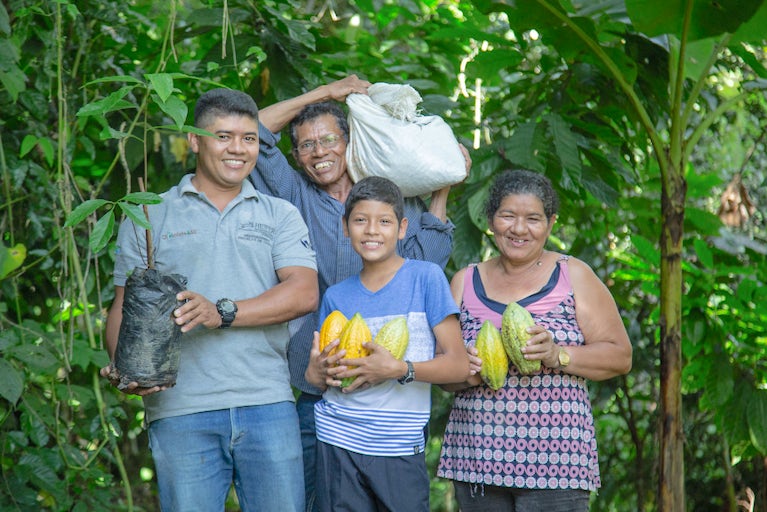
This month, people all over the world are expressing their love with chocolate. Some of that chocolate originates in Central American countries like Honduras, where Heifer has been active since 1978, uplifting tens of thousands of rural families with gifts of livestock, training, farming supplies and construction materials.
In 2019, Heifer launched our Chocolate4All project to encourage 1,000 farmers in the Olancho region of Honduras not only to grow more cacao, but to grow different kinds of cacao — varieties that are more disease-resistant and cheaper to produce.
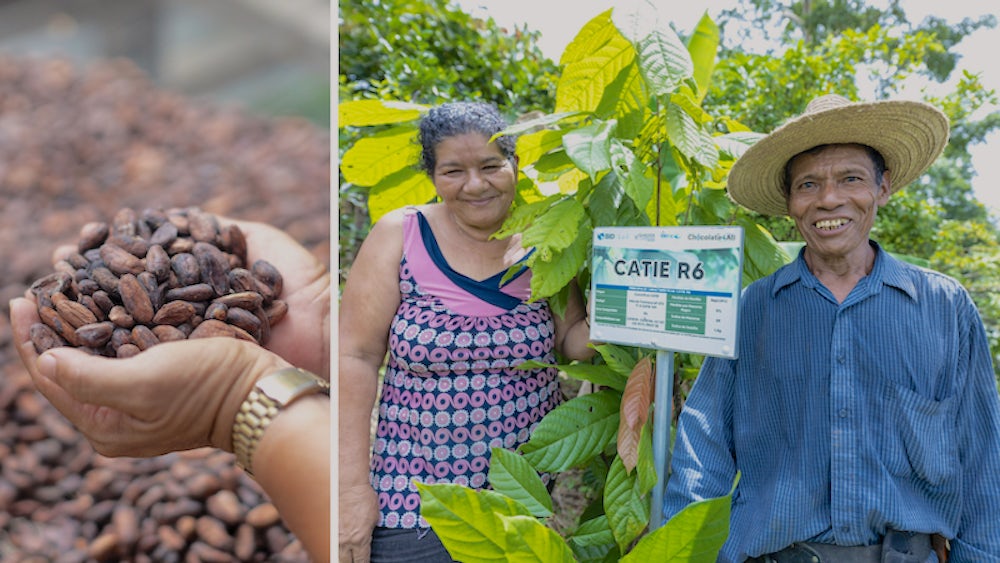
One of these farmers, Ángela Castro loves to transform the cacao she grows into little star-shaped chocolates. She and her husband, Frederico Ortiz, have a farm in the lush mountainous village of Perlas Arriba. Home is a three-room house with a sheet-metal roof. There’s no electricity, but solar panels provide enough energy for lighting.
Life has been challenging for Ángela since she was a child. She was one of eight children, and the home she grew up in had one room with a dirt floor, no electricity or running water, and very little to eat. “Beans and rice, rice and beans — and tortillas,” she says. She dropped out of school at 7 due to illness. There was also a war happening in nearby El Salvador. “We could hear the shooting,” she recalls, frightening conditions for any child.
However, these hardships did not dampen Ángela’s enthusiasm for the beauty that surrounds her, including lush hills; avocado, orange and banana trees; a few coffee plants; and three acres of cacao. She and Frederico raised their five children here, including son Merlin, now 32 and an active participant in their cacao farm and in Chocolate4All.
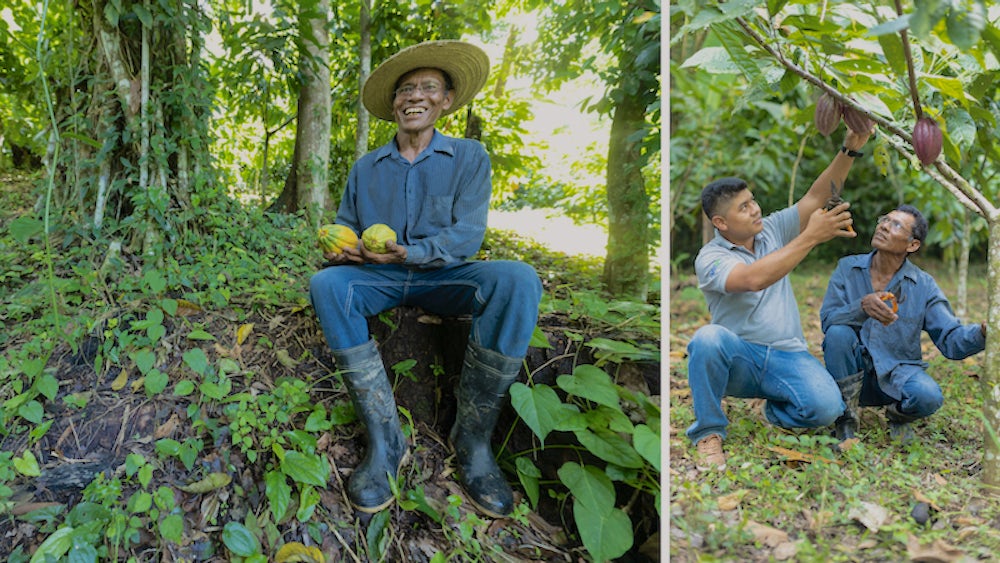
At first, Frederico was skeptical about cacao — he did not believe there was a market for it. Then Heifer linked local growers to Halba, the Swiss chocolatier, and production took off. Ángela and Frederico received 50 cacao plants (eight varieties), along with 50 banana trees, to distract birds from eating the cacao pods.
Heifer trained project participants in planting, pruning, fertilizing, identifying and treating disease, and grafting to improve production. Individual farmers received tools for pruning, and community groups received grinding mills, mixing pots, ovens and refrigerators, scales, chocolate molds, and bags for packaging.
Before Heifer, Ángela and Frederico planted cacao randomly and let the plants grow at will. Birds and diseases decimated the crops. Frederico and son Merlin now know how to plant — “all in a line, with proper rows and depth,” Frederico says. Heifer showed them how to break open the fruit to check for disease, then cut off and burn or bury affected pods.
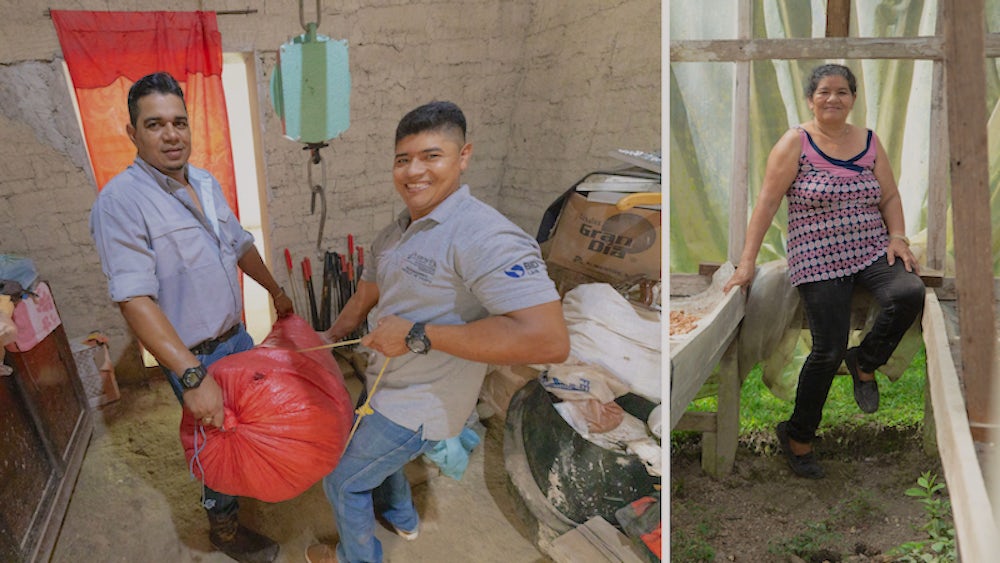
Ángela has always had a gift for turning raw materials into marketable commodities, having cooked since she was a child. As the president of her local women’s group, she helped organize members to make and sell baked goods. She was happy to share her knowledge with others to help improve their livelihoods.
Heifer provided the women’s group with equipment to transform cacao into value-added products like chocolates and gelatin. We also offer transport so the women can market their goods to other communities. Heifer helped Ángela set prices based on production costs and time. “Heifer is always watching over with technical assistance,” she says.
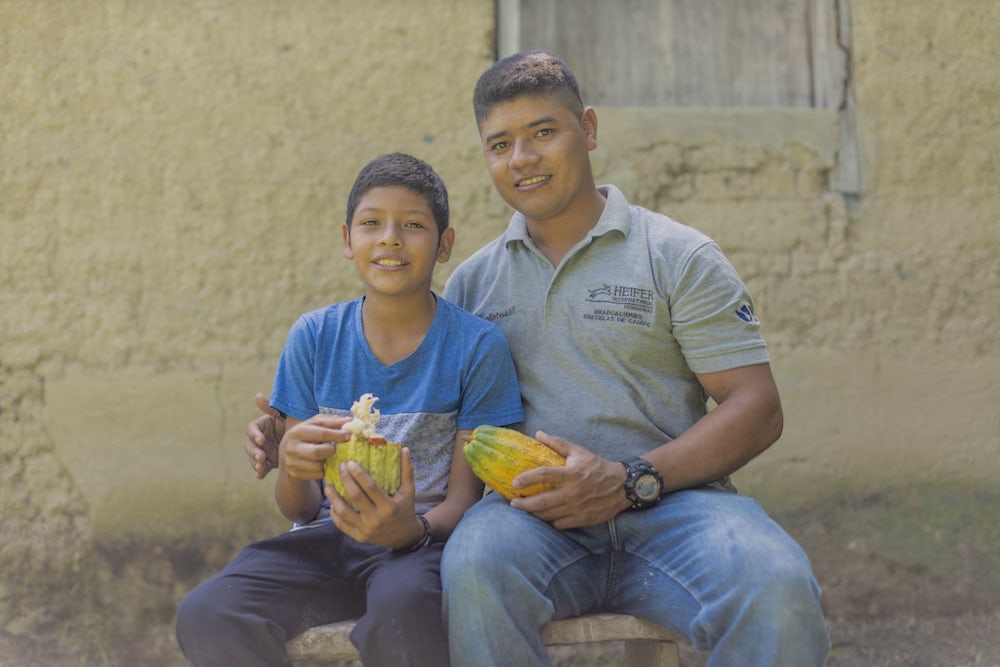
The family’s annual income is about four times greater than before they joined forces with Heifer. It’s more consistent income, too, since cacao can be harvested every 15 days
for nine months of the year (versus coffee, a labor-intensive crop that can be harvested only three months out of the year). “Cacao lasts longer” than other crops, Ángela notes, “and everyone in the family can participate.”
Thank You
Your generous gifts help lead a promising economic and agricultural shift that is improving the lives of families like the Castros in this remote mountain community.

